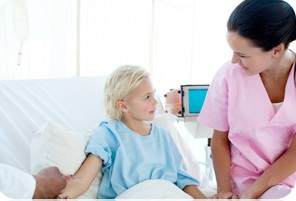Unit 7: Lesson 3: Self-Disclosure
Lesson 3: Self-Disclosure

Lesson 3: Self-Disclosure
Self-disclosure is a vital health communication variable, particularly for patients. We can define self-disclosure as any information that a person communicates to another person about themselves. In the case of the healthcare system, self-disclosure involves a person communicating about their symptoms and their disease or illness. Some healthcare professionals have argued that self-disclosing about health and other aspects of one's life is necessary for proper physical, mental, and emotional health.
Studies indicate that self-disclosure can help patients adjust better to the diagnosis of an illness. It can help them feel less anxious and reassure them that their feelings may be a normal reaction to a severe diagnosis or disease. It may also help people problem-solve issues with symptoms, treatments, and other aspects of their health when they share with others and gain different perspectives.

However, many people feel uncomfortable sharing aspects of their health with others. One study of cancer patients found that only about half of them shared their diagnosis with friends and non-family members. Individuals may feel that sharing their diagnosis or aspects of their illness will make them vulnerable, or they may worry that sharing the information will cause disruptions in their relationships with others. Studies show that people may be somewhat correct about their concerns over self-disclosure. These studies on the self-disclosure of a series of illnesses indicated that the disclosure may make some friends and family uncomfortable with the patient. Sometimes, they may not know what to say, worry about catching the same illness, or focus on cheering up the patient when they would rather have regular interactions.
Increasingly, patients have expressed the desire for increased self-disclosure with healthcare professionals. This includes the ability to feel comfortable sharing their feelings and concerns with healthcare providers and having healthcare professionals self-disclose information to patients. Although self-disclosure needs to happen appropriately between patients and healthcare providers, it can be helpful to patients when healthcare professionals also express their feelings about the situation. For example, a doctor might express concern with a patient about some symptoms while also providing information on what is known about the condition. Healthcare professionals also can express their thankfulness that a patient feels comfortable enough with them to communicate their feelings. These exchanges can help improve the relationship and lead to more effective communication.
Confirmation
Another important variable in effective health communication is confirmation. Confirmation is the conveyance of acceptance and acknowledgment of the person. Confirming communication can be verbal and nonverbal and seeks to validate the people within the communication. If we think about a typical hospital setting, we can imagine the number of patients and the number of staff members. We can imagine how busy health professionals are and how important it is to keep accurate and detailed records. Confirming communication helps patients feel they are more than a number and is essential to the healthcare professionals helping treat them.
Confirmation can help patients feel that they are recognized and that their symptoms and responses are typical. Confirming responses can include listening to a person without interrupting, acknowledging what the person has shared, and responding to show that the information has been heard and understood. For example, a healthcare professional who quickly dismisses a patient's concern and begins talking on another topic has not offered confirmation to the patient.
These dimensions of effective health communication are just a few variables healthcare scholars have identified as necessary for improving communication. To bring these dimensions into health communications, healthcare professionals may use different strategies to improve their conversations. In some cases, healthcare settings may also offer professionals training in communications to help them communicate more effectively.
